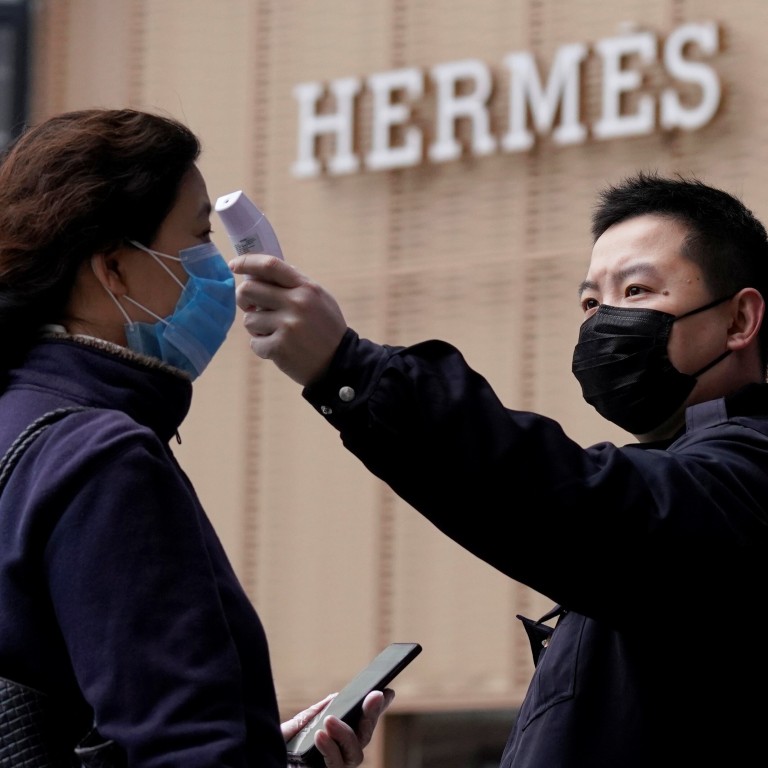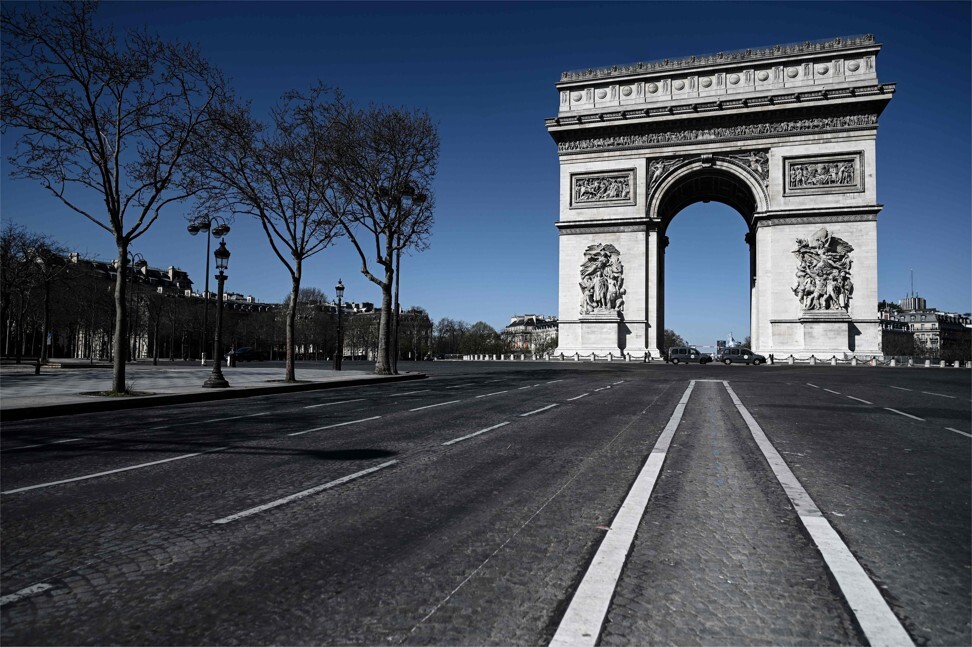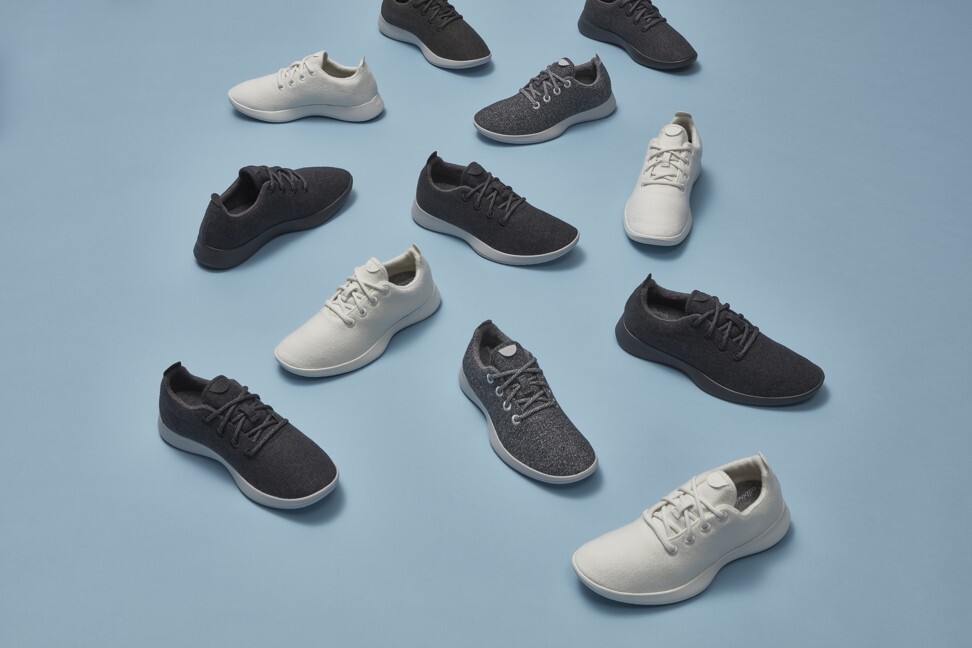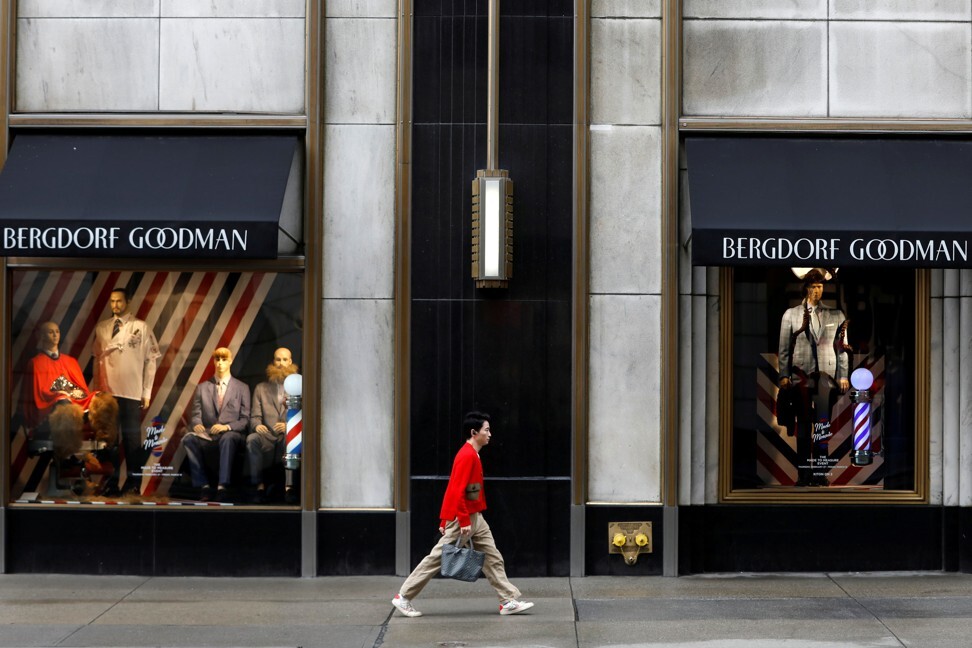
Fashion and the coronavirus: survival of the fittest – why some brands won’t make it, and how those that do must adapt
- Labels that fall between being a fashion and a heritage brand, like Hermès, will fare better than luxury brands relying on bold new styles for their collections
- Brands that stay the course will move sales more online, and frivolity will be out; the big question is: will consumers still have an appetite to shop?
A single double-decker bus carrying key workers sails unimpeded down an otherwise deserted Regent Street in London. On Paris’ Rue Saint-Honoré, masked policemen stand in front of closed stores, fining anyone caught more than 2km from their residence. Along Fifth Avenue and down in the West Village and Nolita, the storied shopping streets of New York are empty, and the sound of birdsong can be heard for the first time.
From the closed apparel factories of China to the empty stores of the world’s style capitals, the coronavirus has decimated the luxury fashion industry, bringing retail sales to a grinding halt.
Near-term statistics are almost universally apocalyptic, but the long-term coronavirus punch in the gut will prove much more painful for certain retailers – and regions – than others.
“So far the coronavirus has been devastating,” says luxury adviser Mario Ortelli. “This is the only positive I can find, but slowly Asia appears to be coming back, and recovering a bit. Now Europe and America are the centre of the storm – which means they can look to Asia to see what might happen, and then simply try to survive for that long.”

Survival will take work. According to a report surrounding the effects of Covid-19 on the retail industry compiled by consulting company McKinsey in partnership with online trade publication Business of Fashion, global fashion industry sales are expected to fall by 27-30 per cent, and sales of the personal luxury goods industry by 35-39 per cent, in 2020. Across the board, total luxury sales are expected to drop by up to US$650 billion from 2019 levels.
How coronavirus could change China luxury market
The impact on luxury fashion is expected to be far greater than after the 2008 global financial crisis.
“Some brands will get through this more easily than others,” says Danielle Bailey, an analyst at L2 Gartner. “Bigger brands with a diverse assortment, an emphasis on value, multiple points of distribution to offset disruptions to the supply chain, and nimble resources have a decided advantage in a crisis such as this.”

Ortelli believes labels that fall somewhere between being a fashion and heritage brand, such as Hermès, will fare better than luxury brands that rely on bold new styles each collection. This is partly because they are far less season dependent, but also because customers are more likely to invest in a durable piece of clothing rather than an extravagant one-off.
But it is smaller luxury brands without deep pockets and big financial reserves that are the least likely make it through, having no major reserves to pay their rent over the coming months and less of an online presence. Many are also concerned that when factories are back up and running again, small brands will be brushed aside by manufacturers in favour of bigger clients.

One spot of hope is that recently released figures in China suggest e-commerce is helping brands stay afloat, even while bricks-and-mortar sales plummet.
“Seasoned direct-to-consumer brands such as Allbirds should be all right,” says Bailey, “as they already have an in with the digital consumer and they are not encumbered with hundreds of stores filled with inventory that isn’t moving, and eventually will have to be liquidated.”

However, many of the world’s richest customers are over 50, and are therefore less likely to shop online. “Affluence and digital literacy don’t walk hand in hand, and as the affluent have been confined to their homes, luxury brands will have to learn how to make their websites more user-friendly,” says Paco Underhill, the founder of consulting company Envirosell and author of Why we Buy: The Science of Shopping. “There are some very basic steps older, affluent customers may not be cognisant of.”
Underhill predicts that the post-coronavirus fashion world will look very different. He argues that, as a first step, brands will have to ensure staff are seen to be taking hygiene very seriously. Fashion labels are also going to have to work hard to lure back customers who have seen their share portfolios sink.
“People will have spent this time in sweatpants, clearing out their closets and worrying about their bank accounts, and I don’t think they’ll want to buy anything too frivolous,” says Underhill. “Brands should focus on presenting fewer and better things in this post-pain world.”

Marketing should follow a similar trajectory. “Be sensible now,” says Ortelli to brand managers. “Invest in digital advertising, not print, and be mindful about communication: when people are in danger, they don’t want to hear about fashion, so instead make a charity donation, or find a way to improve the situation.” And when this is over, he suggests brands do a PR and marketing push, but a gentle one. “Don’t overdo it,” he says.

China and the West will have different reactions to this crisis. In China, wealth is held in a younger age group than it is in Europe and the US, where it is concentrated among the over-55s.
In some ways, brands in China will benefit from this, as their customer base will come out of this physically unscathed. But equally, young people may be more traumatised by the first global catastrophe of their lifetime and will be less likely to resume normal shopping habits.

Underhill suggests that luxury brands hoping to lure Chinese clients back should focus on highly localised campaigns, shooting behind small regional landmarks, rather than those in, say, Paris or Hong Kong.
“This will lead to an evolution in digital marketing, as the coronavirus will make people far more wedded to the local than they were before,” he explains. “It’s also important to remember that this will play out very differently in first-tier Chinese cities compared to third-tier ones.
“Shanghai and Beijing will bounce back quickly, as they’re fast-paced global cities, but I don’t see people in second- or third-tier cities spending money on luxury fashion for a while. As for Hong Kong – weathering an economic and political storm at once means this might take their fashion sector twice as long to recover.”

Ultimately brands – like humans – that went into this crisis in reasonable health will have far more chance of coming out of it unscathed. But only time will tell which regions will emerge with a luxury fashion industry that bears some resemblance to what it once was.

